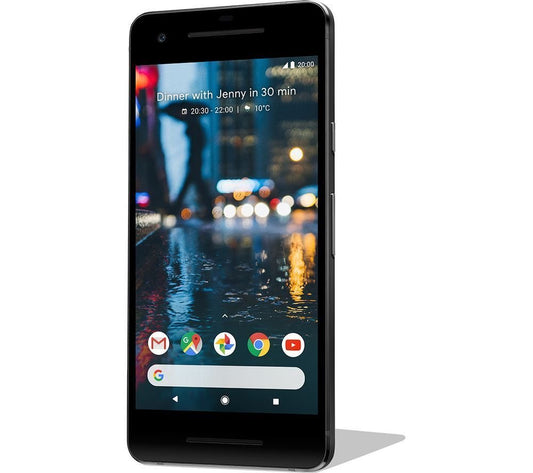In the current technological landscape, where data breaches and unauthorized surveillance have become commonplace, the significance of privacy phones has drastically increased. As consumers become more aware of their digital footprint, the demand for secure smartphone options, such as the Google Pixel 6a and devices running on GrapheneOS, has surged. In this article, we will explore the reasons behind this trend and how investing in privacy-centric devices can help protect your personal data.
Understanding Privacy Phones
A privacy phone is designed to maximize user privacy and security by minimizing data collection and providing advanced encryption features. They typically run on secure operating systems that prioritize user privacy. This could include custom operating systems like GrapheneOS, which enhance the privacy features of existing hardware like the Google Pixel 6a. But what exactly makes privacy phones essential today?
The Rise of Digital Surveillance
As technology evolves, so do the methods of surveillance and data collection. Companies and governments collect large quantities of data on individuals, often without their explicit consent. This has led to a growing concern over personal privacy. The average smartphone user may not realize how much information they are sharing through their devices:
- Location data
- Messaging and call history
- Browsing habits
- App usage and preferences
With privacy phones, users can regain control over their digital lives. By limiting data collection and supporting secure communication channels, these devices provide a layer of protection against invasive practices.
Benefits of Using Privacy Phones
Investing in a privacy phone offers several advantages beyond just keeping your data safe. Here are some key benefits:
Enhanced Security Features
Privacy-focused smartphones often incorporate advanced security features that are not available in standard devices. These may include:
- End-to-end encryption for calls and messages
- Customizable privacy settings
- Frequent security updates
Systems like GrapheneOS provide an extra layer of security, ensuring that vulnerabilities are patched quickly and efficiently.
Data Sovereignty
Using a privacy phone allows users to reclaim control over their data. Many standard smartphones send user data to companies for analysis, leading to targeted advertising and even data selling. By using devices like the Google Pixel 6a running privacy-centric operating systems, you can avoid falling into these data traps.
Support for Privacy-Centric Apps
Many privacy phones are compatible with applications that prioritize user privacy. These include secure communication apps, decentralized social media platforms, and browsers that block trackers. By choosing privacy phones, users can ensure that they are only using applications that protect their data, thus further enhancing their privacy.
Features to Look for in a Privacy Phone
When considering a privacy phone, there are certain features that should be top of mind. Here are a few important aspects to keep in mind:
Operating System
The operating system is one of the most critical factors in determining a smartphone's security and privacy. Look for devices that run on secure operating systems like GrapheneOS, which focuses on minimizing data leakage and maximizing user control.
Hardware Security
The hardware itself plays a role in the overall security of a smartphone. Choose devices that feature hardware security modules or trusted platform modules to ensure that sensitive keys and data are encrypted at the hardware level.
Privacy by Design
Ensure that the device and its software are built with privacy as a foundation. Look for phones that come pre-installed with privacy settings and features, ensuring they don’t require extensive adjustments post-purchase.
The Popularity of Privacy Phones
The growing public awareness around data privacy has led to a spike in interest surrounding privacy phones. Consumers are searching for alternatives to conventional smartphones, which often prioritize profit over privacy. The Google Pixel 6a, known for its superior security features, is a prime example of how manufacturers are adapting to market needs.
Community and Open Source Contributions
Many privacy phones benefit from community support and open-source contributions, allowing for transparency in security practices. GrapheneOS thrives on community feedback and contributions, continually improving the software and ensuring it addresses the privacy concerns users have.
Privacy Phones vs. Conventional Smartphones
When deciding between privacy phones and standard smartphones, the differences become clear:
- Data Collection: Conventional smartphones often track user behavior, whereas privacy phones minimize this data collection.
- Default Settings: Standard devices usually have default settings that favor data sharing, while privacy phones default to maximizing user privacy.
- Availability of Apps: Privacy phones usually support applications that are open source and respect user privacy.
This stark difference highlights why users are increasingly leaning towards privacy phones as a viable option for securing their identities in today’s data-driven world.
Future Trends in Privacy Phones
As the digital landscape continues to evolve, so too will the technology behind privacy phones. Here are some future trends we can expect to see in this sector:
Integration of Advanced Technology
We can anticipate a rise in the integration of cutting-edge technologies, such as artificial intelligence, that can analyze user behavior without collecting personal data. This will enhance user experiences while preserving privacy.
Broader Acceptance of Privacy Laws
As privacy concerns become more pronounced among users, we may see increased regulation and legal measures aimed at protecting user data. This could drive more manufacturers to develop privacy phones and prioritize data protection.
Steps to Transition to a Privacy Phone
- Research and Choose a Device: Investigate available privacy phones, including options like the Google Pixel 6a, and decide which one suits your needs.
- Transfer Data: Safely transfer your data from your old smartphone to your new privacy phone, ensuring you do not carry over unnecessary data.
- Install Privacy-Centric Apps: Explore a range of privacy-friendly applications to replace the standard apps you previously used.
- Configure Privacy Settings: Dive into the privacy settings upon setting up your new device to customize them to your comfort level.
Final Thoughts: Embrace Your Digital Privacy
With the increasing dangers of data breaches and surveillance, it is essential to prioritize your online privacy. Embracing a privacy phone is more than just a personal choice; it's a step towards regaining control over your digital presence. By choosing devices like the Google Pixel 6a and leveraging secure operating systems such as GrapheneOS, you can take proactive measures to safeguard your information. In a world where privacy is increasingly becoming a luxury, take the steps to protect yourself and embrace the digital privacy that every individual deserves. Don’t just be a passive consumer; be a savvy user who champions their right to privacy!










